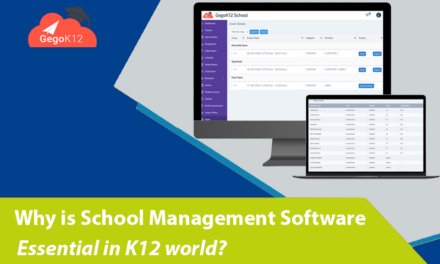Web development is now essential for businesses to grow and remain competitive as the web is becoming more popular. It informs people of what you do, promotes your products and services, and gives you global visibility – all of which are key to success. To get the most out of Artificial Intelligence, it’s important to invest in experienced hire Laravel developers who know all the ins and outs of web development – from network security to web content development, website design, publishing, and database management. But hiring the right pro isn’t a piece of cake.
When hiring Laravel developers, some factors to consider include:
- Technical skills: Make sure the developer has experience working with Laravel and is familiar with its features and capabilities.
- Experience: Look for developers who have experience working on similar projects or in similar industries.
- Communication skills: A developer who can clearly communicate their ideas and solutions is important for effective collaboration.
- Flexibility and adaptability: A developer who is able to adapt to changing project requirements and work with different technologies is highly valuable.
- Problem-solving skills: Look for developers who are able to think critically and come up with solutions to complex problems.
- Passion: Developers who are passionate about their work and take pride in their accomplishments are more likely to produce high-quality work.
- Portfolio: Look at the developer’s portfolio to get a sense of their skills and experience.
- Teamwork: Look for developers who are able to work well with others and are comfortable in a team environment.
- Time management: Developers who can manage their time effectively and meet deadlines are vital for the success of the project.
- Cost: Look for developers who are affordable and can provide quality work within your budget.
Laravel interview questions you should ask in 2023
When interviewing Laravel developers in 2023, some questions you may want to ask include:
1. Can you explain the role of controllers in Laravel and how they handle requests?
In Laravel, controllers are used to handling HTTP requests and define the logic for handling those requests. They are responsible for processing the request data, interacting with models to retrieve or persist data, and returning a response to the client.
2. How do you handle database migrations in Laravel?
In Laravel, database migrations are used to manage changes to the structure of the database schema. They allow you to version control your database and easily roll back or apply changes to different environments.
3. How do you handle security in a Laravel application? What measures do you take to prevent common security vulnerabilities?
Laravel provides several built-in features and tools to help secure your application and prevent common security vulnerabilities. Here are a few examples of measures you can take when working with Laravel:
- Using prepared statements and parameter binding: Laravel’s Eloquent ORM and query builder automatically use prepared statements and parameter binding to prevent SQL injection attacks.
- Cross-Site Request Forgery (CSRF) protection: Laravel automatically generates and validates CSRF tokens for all forms to prevent unauthorized requests.
- Cross-Site Scripting (XSS) protection: Laravel automatically escapes output to prevent XSS attacks.
- Password hashing: Laravel uses the crypt algorithm to hash and verify passwords, making them more secure.
- Input validation: Laravel provides several built-in validation rules and validation methods to ensure that user input is safe and valid.
- Error handling: Laravel provides a detailed error reporting system and an easy way to handle errors, which can help to prevent sensitive information from being exposed.
- Authorization: Laravel provides built-in support for creating and managing user roles and permissions that can help to prevent unauthorized access to sensitive areas of your application.
- Keep dependencies and Laravel itself up-to-date to benefit from security patches and updates.
4. Can you explain how Laravel’s Eloquent ORM works
Laravel’s Eloquent ORM (Object-Relational Mapping) is an active record implementation that allows you to interact with your database using an object-oriented syntax. It maps database tables to classes and rows to instances of those classes.
5. Can you explain how Laravel’s blade templating engine works
Laravel’s blade templating engine is a simple and powerful templating system that allows you to create and reuse views in your application. It provides a set of control structures and directives that can be used to separate logic from presentation.
6. Can you explain how Laravel’s event and listener system works
Laravel’s event and listener system allow you to raise events in your application and attach listeners to those events to perform certain actions. Events are simple classes that hold information about something that has occurred in your application, and listeners are methods that handle those events.
7. How do you handle errors and exceptions in a Laravel application?
Laravel provides a detailed error reporting system and an easy way to handle errors, which can help to prevent sensitive information from being exposed.
When an error or exception occurs in a Laravel application, the framework will catch it and display an error page. By default, error pages will only be shown in the development environment. In the production environment, a custom error page can be shown or the error can be logged.
8. Can you explain how you have used Laravel’s built-in validation and form request classes in a previous project?
In Laravel, you can use built-in validation and form request classes to validate user input and handle validation errors.
The validation method can be used to validate incoming data. It can be called on the request object, or you can use a separate validation class. In this class, you can define validation rules, messages, and custom logic.
9. What is Route, and why do you use it?
In Laravel, routes are used to define the URLs of your application and map them to specific controllers or closure functions that handle the logic for those URLs. Routing is the process of taking a URI endpoint (that part of the URI which comes after the base URL) and decomposing it into parameters to determine which controller should handle the request.
10. Explain Relationships in Laravel
In Laravel, relationships are used to define the connections between different models in your application. Relationships are defined using methods on the model classes, and they allow you to easily retrieve related data from the database.
Laravel supports several types of relationships, including:
- One-to-One: A one-to-one relationship is used when one model has a single related model. For example, a User model might have one Profile model.
- One-to-Many: A one-to-many relationship is used when one model has multiple related models. For example, a Post model might have many Comment models.
- Many-to-Many: A many-to-many relationship is used when two models have multiple related models. For example, a User model might have many roles, and a Role model might have many users.
- Has-One-Through: A Has-One-Through relationship allows you to reach a model through another one, for example, a country model has many users, but you can reach the user’s address through the user model.





